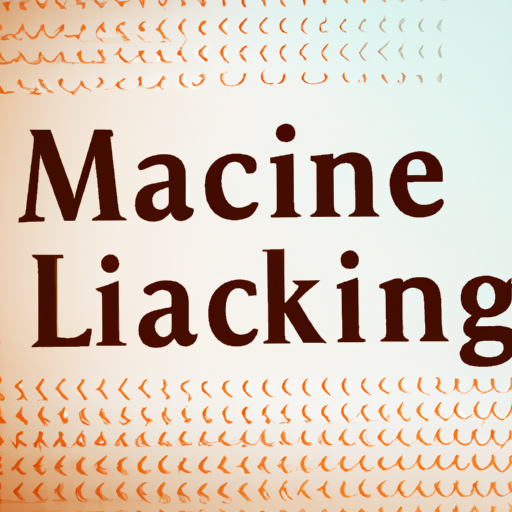Understanding Machine Learning: A Comprehensive Guide
Machine learning has rapidly become a cornerstone of the technology landscape, influencing everything from online recommendations to self-driving cars.
But what is machine learning, and why is it so crucial today?
In this article, we will delve deep into the world of machine learning, breaking down its components and showcasing its applications.
What Is Machine Learning?
Machine learning is a subset of artificial intelligence that involves the creation of algorithms capable of learning from and making predictions based on data.
Unlike traditional programming, where explicit instructions are given to perform tasks, machine learning enables systems to learn patterns and make decisions with minimal human intervention.
Imagine teaching a child to recognize different animals by showing pictures—that’s similar to how machine learning works.
Algorithms are trained using large datasets until they can identify patterns or make decisions on their own.
The Importance Of Data
Data is the lifeblood of machine learning.
Without data, algorithms have nothing to learn from.
The quality and quantity of data significantly impact the effectiveness of a machine-learning model.
For instance, if you were developing an algorithm to recognize cats in images, you’d need a vast collection of labeled images featuring cats and other objects for comparison.
The more diverse and extensive your dataset, the better your algorithm will perform.
The Different Types Of Machine Learning
Machine learning can be broadly classified into three categories: supervised learning, unsupervised learning, and reinforcement learning.
Supervised Learning
In supervised learning, algorithms are trained on labeled data.
This means that each training example is paired with an output label.
The algorithm learns by comparing its output against the correct answer and adjusting itself accordingly.
A common example is email spam filtering.
The algorithm learns from a dataset containing emails labeled as ‘spam’ or ‘not spam’ and then applies this knowledge to new emails.
Unsupervised Learning
Unsupervised learning deals with unlabeled data.
Here, the goal is for the algorithm to find hidden patterns or intrinsic structures in input data without any specific output labels.
Think about clustering customer segments based on buying behavior.
The algorithm groups customers with similar behaviors together without any prior labeling.
Reinforcement Learning
Reinforcement learning focuses on decision-making sequences where an agent learns by interacting with its environment through trial and error.
It aims at maximizing cumulative rewards over time.
An excellent real-life example includes self-driving cars that learn optimal driving strategies through continuous interaction with their environment while minimizing risks like accidents.
Real-Life Applications Of Machine Learning
Machine Learning isn’t just confined within research labs; it’s transforming industries across sectors:
Healthcare
In healthcare, machine-learning algorithms analyze medical records for disease prediction or recommend personalized treatment plans.
Imagine a system that could predict heart disease years before traditional methods—that’s the power of machine-learning!
Finance
Financial institutions leverage ML models for fraud detection by identifying unusual transaction patterns.
These models also power robo-advisors providing investment advice tailored specifically for individual financial goals.
E-commerce And Marketing
Ever wondered how Netflix suggests movies you might like?
Or how Amazon recommends products based on your browsing history?
That’s all due to artificial intelligence machine-learning algorithms, which analyze user behavior extensively for personalized recommendations.
Key Technologies And Tools In Machine Learning
Several technologies empower practitioners working in this field:
Python Programming Language
When it comes to AI programming with Python—Python stands out due to its simplicity & extensive libraries such as TensorFlow & PyTorch simplifying model building processes considerably making it essential knowledge whether aiming towards becoming full-stack developers specializing in AI technologies!
The popularity stems not only because syntax’s readability but also continued community support ensuring rapid advancements keeping pace constantly evolving needs industry demands!
Moreover many ‘cloud computing courses‘, incorporate Python-centric curriculum reflecting growing reliance across varied AI-driven applications underlining importance mastering language early stages career development!
(Introduction To Artificial Intelligence), widely regarded seminal textbook authors Stuart Russell Peter Norvig presents comprehensive overview foundational principles underlying modern approaches equipping readers critical insights navigating complex realms successfully managing projects effectively implementing cutting-edge solutions!
‘Science Technology Engineering Mathematics’, STEM disciplines often intertwined forming basis emerging technologies requiring cross-functional expertise addressing multifaceted challenges encountered pursuing innovative paths forward!
‘Artificial Intelligence A Modern Approach’, Well-established reference delves deeper intricacies encompassing broader aspects beyond traditional scopes encapsulating progressive ideations aligning futuristic visions practical implementations defining contemporary landscapes embracing transformative potentials redefining conventional paradigms pivoting towards smarter interconnected ecosystems fostering sustainable growth trajectories enhancing quality life globally unprecedented scales!!!
Conclusion:
Summarizing comprehensively explored facets pivotal subject demystifying underlying principles shedding light numerous possibilities extending horizons inspiring future endeavors shaping tomorrow’s technological vistas leveraging intelligently crafted solutions unlocking untapped potentials revolutionizing ways perceiving everyday realities integrating seamlessly enriching experiences enriching lives exponentially!

